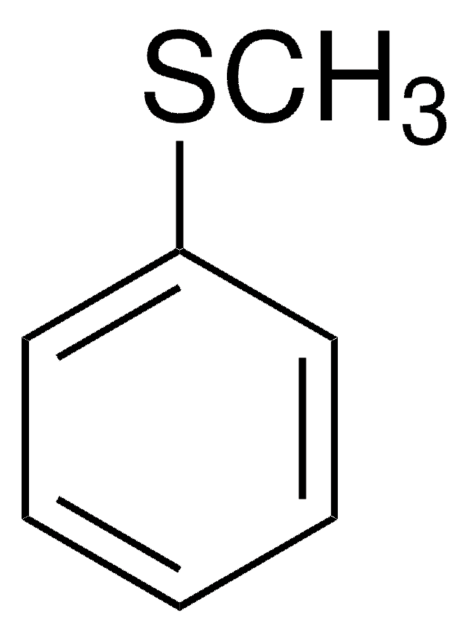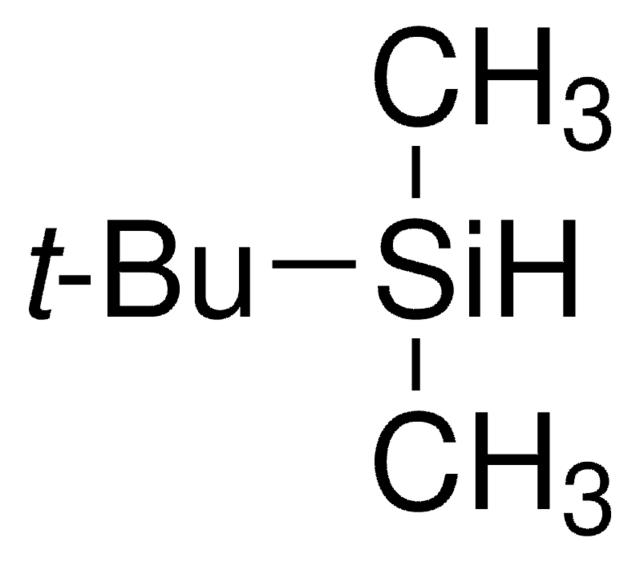233781
Triisopropylsilane
98%
Synonim(y):
TIS, Triisopropylhydrosilane, Tris(1-methylethyl)silane
About This Item
Polecane produkty
Poziom jakości
Próba
98%
Postać
liquid
przydatność reakcji
reagent type: reductant
współczynnik refrakcji
n20/D 1.434 (lit.)
tw
84-86 °C/35 mmHg (lit.)
gęstość
0.773 g/mL at 25 °C (lit.)
ciąg SMILES
CC(C)[SiH](C(C)C)C(C)C
InChI
1S/C9H22Si/c1-7(2)10(8(3)4)9(5)6/h7-10H,1-6H3
Klucz InChI
YDJXDYKQMRNUSA-UHFFFAOYSA-N
Szukasz podobnych produktów? Odwiedź Przewodnik dotyczący porównywania produktów
Opis ogólny
Zastosowanie
- To synthesize 4-pyrrole phenylacyl peptide during solid-phase peptide synthesis.
- In transition metal complex-catalyzed reaction of amides with hydrosilanes.
- For the selective reduction of C-arylglucosides into β-C-aryl glucosides.
- To facilitate the cleavage of acetamidomethyl (Acm), 4-methoxybenzyl (Mob), and tert-butyl (But) protecting groups from cysteine (Cys) residues in the presence of trifluoroacetic acid.
- For the reduction of amides to corresponding amines in the presence of transition-metal catalysts.
produkt powiązany
Hasło ostrzegawcze
Warning
Zwroty wskazujące rodzaj zagrożenia
Zwroty wskazujące środki ostrożności
Klasyfikacja zagrożeń
Flam. Liq. 3
Kod klasy składowania
3 - Flammable liquids
Klasa zagrożenia wodnego (WGK)
WGK 3
Temperatura zapłonu (°F)
100.4 °F - closed cup
Temperatura zapłonu (°C)
38 °C - closed cup
Środki ochrony indywidualnej
Eyeshields, Faceshields, Gloves, type ABEK (EN14387) respirator filter
Certyfikaty analizy (CoA)
Poszukaj Certyfikaty analizy (CoA), wpisując numer partii/serii produktów. Numery serii i partii można znaleźć na etykiecie produktu po słowach „seria” lub „partia”.
Masz już ten produkt?
Dokumenty związane z niedawno zakupionymi produktami zostały zamieszczone w Bibliotece dokumentów.
Klienci oglądali również te produkty
Nasz zespół naukowców ma doświadczenie we wszystkich obszarach badań, w tym w naukach przyrodniczych, materiałoznawstwie, syntezie chemicznej, chromatografii, analityce i wielu innych dziedzinach.
Skontaktuj się z zespołem ds. pomocy technicznej













